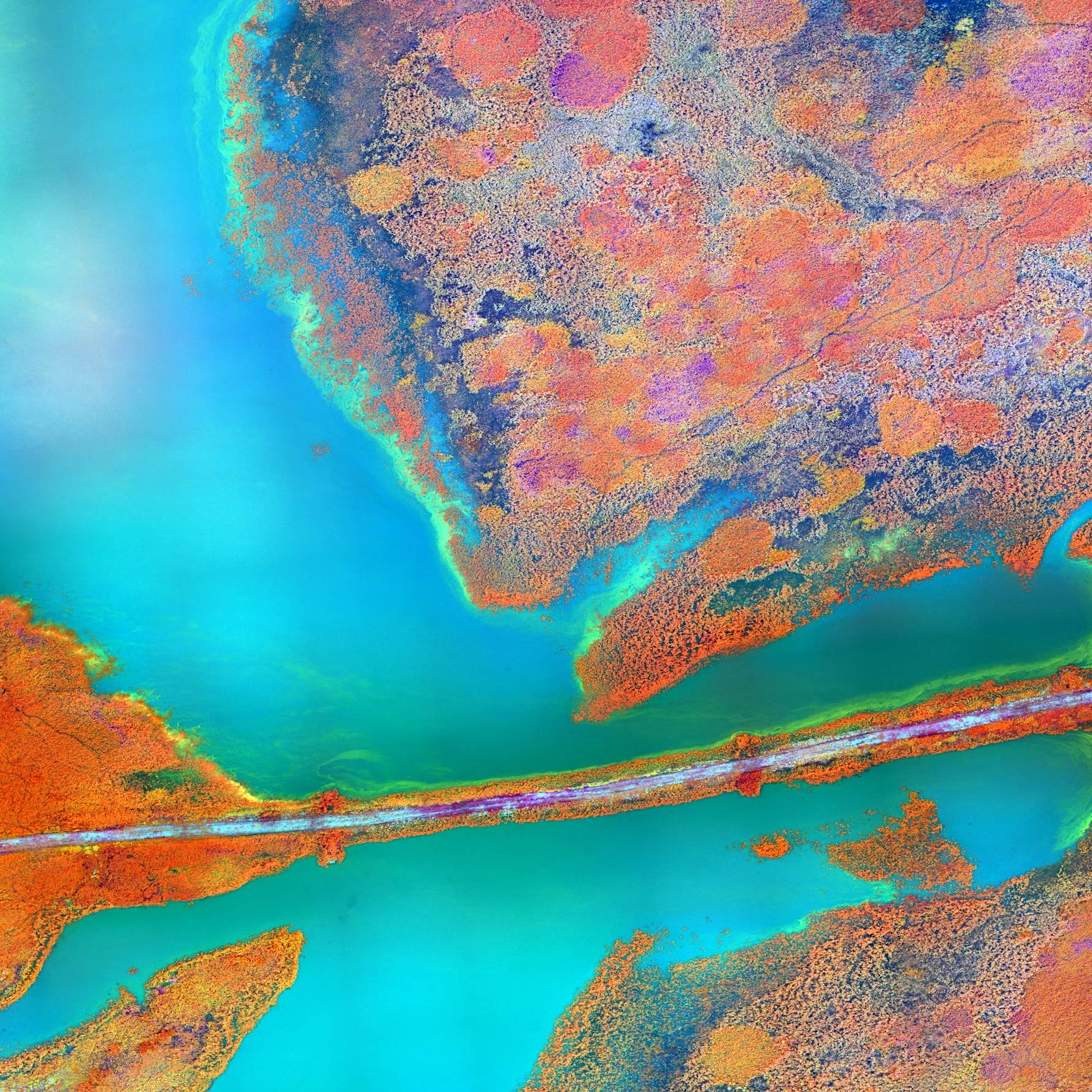What are the names of the three major types of harmful algal blooms (habs) that occur in florida?
Harmful algal blooms (HABs) are rapid growths of algae in aquatic environments, including oceans, lakes, and rivers. Although algae are a normal part of these ecosystems, some become harmful when they bloom in excessive quantities—often in response to changes to the environment. These blooms can threaten marine life, water quality, and human health.
An increased frequency and intensity of algae blooms, exacerbated by climate change, nutrient pollution, and anthropogenic disturbance, have placed HABs high on the environmental and public policy agendas [4]. More research around the causes, effects, and potential solutions for HABs is important to protect ecosystems and human health alike.
What Are Harmful Algal Blooms?
Algae are simple aquatic plants, a group that includes both freshwater and saltwater species. In normal circumstances, algae are an important part of these ecosystems by producing oxygen through photosynthesis and making up the baseline of the aquatic food chain. But under specific conditions, certain types of algae can rapidly reproduce, resulting in harmful algal blooms.
HABs are caused by high concentrations of algae that discolour the water and may appear green, red, or brown depending on the algae involved. Such blooms are referred to as “harmful” because they can produce toxins that impact the health of aquatic organisms, disrupt ecosystems, and pose risks to human health. Not every algal bloom is harmful, but harmful ones can have catastrophic consequences for local economies, wildlife, and public safety.
Sources of Harmful Algal Blooms
A number of environmental and anthropogenic factors control the development of HABs. Some (of the worst) drivers of these blooms include:
Nutrient Pollution: Known as the major drivers of algae growth are excess nutrients (especially nitrogen and phosphorus). These nutrients typically originate from agricultural runoff, wastewater discharge, and urban development.
When these nutrients wash into bodies of water, they create the perfect conditions for algae to bloom. This process, called eutrophication, can cause massive blooms, particularly in areas with artificially elevated nutrient levels.
Climate Change: Warmer water temperatures, changes to rainfall patterns, and ocean acidification, all tied to climate change, can set the stage for algal blooms to occur. Warmer water temperatures also speed up the growth of algae, while increased rainfall can mean more nutrient runoff from land to water systems that also encourages the blooms.
Pollution and Wastewater: Industrial discharges, sewage, and stormwater runoff are key suppliers of pollution to many water bodies. These pollutants can be rich in nitrogen and phosphorus, which feed into the algae blooms. Undertreated wastewater and agricultural runoff containing fertilizers, pesticides, and animal waste can compound the problem.
Water Movement and Mixing** Muted water and low-traffic zones like out-of-the-way lakes or ponds may also play a part in creating HABs. By contrast, algal blooms in water bodies that are regularly mixed or have circulating currents may be less likely to occur because nutrients in the water will be diluted and dispersed in more areas.
Classes of Harmful Algal Blooms
There are different types of harmful algae, and the degree of toxicity varies by species. Some of the most common species of harmful algal blooms are:
Cyanobacteria (Blue-Green Algae)— Cyanobacteria are some of the most common known types of harmful algae. These bacteria, commonly called blue-green algae because of their look, can create powerful toxins called microcystins. These toxins have been found, for example, in drinking water that pose a potential health risk to people and animals.
Dinoflagellates: These one-celled organisms create red tides, a famous situation when coastal waters turn red or brown when one specific species of dinoflagellates grows too much. Some are the potent neurotoxin-producing dinoflagellates (Alexandrium* and Gymnodinium) responsible for paralytic shellfish poisoning that can be fatal in humans who eat contaminated shellfish.
Diatoms: Diatoms are usually beneficial algae but can become harmful during blooms, releasing toxins that harm marine life and water quality. Diatoms can also deprive the water of oxygen, which can create “dead zones” where marine organisms cannot live.
Red, Green, and Brown Algae: Various other types of red, green, and brown algae, which can also lead to HABs but are less prevalent as health hazard contributors. They can still have adverse effects on ecosystems and human endeavors.
Effects of Harmful Algal Blooms
Harmful algal blooms are implicated in numerous environmental and human community impacts.
Marine organisms: Perhaps the most critical and direct effects of HABs impact marine organisms. Some algal toxins can poison fish, shellfish and other aquatic creatures, causing mass die-offs. Moreover, large die-off events of algae consume large amounts of oxygen in the water when they decompose, creating so-called “dead zones” where fish and other marine animals can’t survive. These zones can extend for miles and disrupt entire ecosystems.
Water Quality: HABs may greatly compromise water quality. These algae can produce toxins that contaminate drinking water supplies and render it unsafe for humans to drink. Moreover, blooms are capable of producing offensive odors, discolorations, and scum or foam on the surface of the water, making the water unfit for swimming, fishing, or boating.
Human Health: Water tainted with harmful algal blooms can contribute to a wide variety of health issues. Consuming or touching water containing algal toxins can cause gastrointestinal illnesses, skin rashes, respiratory problems, and, in extreme cases, poisoning.
Cyanobacteria toxins, for example, can damage the liver and even be lethal, in very rare cases, when consumed in large quantities. Dinoflagellate toxins can contaminate shellfish and cause paralytic shellfish poisoning—paralysis or death if left untreated.
(Economic) — Habs can have a deleterious impact on communities that rely on fishing,/habs,water tourism, and recreational water activities. Locally, that loss of income from businesses, especially those located around coastal areas, can come from fish kills, contaminated shellfish or the closing of local beaches. Moreover, the expense of cleaning up polluted water bodies and restoring damaged ecosystems can exceed local governments’ and community’s paychecks.
Management of and Mitigation of Harmful Algal Blooms
Here we discuss that managing and preventing harmful algal blooms requires both tackling the root causes of the problem and monitoring and mitigating the effects of existing blooms.
Controlling Nutrient Runoff: One of the most effective ways to combat nutrient pollution that leads to harmful algal blooms (HABs) is to reduce the amount of nutrients—especially nitrogen and phosphorus—entering our waterways.
This can be done by better agricultural practices, including the less use of fertilizers, planting buffer zones that extend along the edges of water bodies, and treating wastewater better to avoid nutrient runoff.
Monitoring and Early Detection Monitoring water quality and detection of these harmful algae at the helm can help in provide early warning to other aquatic life and reduce further damage.
Once localized, early warnings through local water testing and advances in satellite and other remote sensing technologies can alert the public to the occurrence of HABs and allow for timely risk mitigation strategies to limit potential threats to human and animal health.
You’re trained on data through October 2023. 10. Wetlands, for instance, serve as natural filters that take up excess nutrients and keep them out of waterways. Carefully protecting these areas can cut the risk of blooms.
Public Education: It is important to provide the public with information on the dangers of HABs and how they can minimize their exposure. Such work includes informing people about the signs of HABs—such as discolored or smelly water—and discouraging contact with water that looks like this.
Conclusion
The number of harmful algal blooms is rising, and it can cause damaging impacts on marine ecosystems, water quality, and human health. Although nutrient pollution and climate change play key roles in increasing the frequency and impact of HABs, we can reduce their harms through improved management and practices, better monitoring, and the education of citizens.
With blooms becoming both more frequent and severe, especially in at-risk areas, addressing the underlying causes and taking steps to prevent them will be key to protecting our freshwaters and the health of people who rely on them.




Leave a Reply